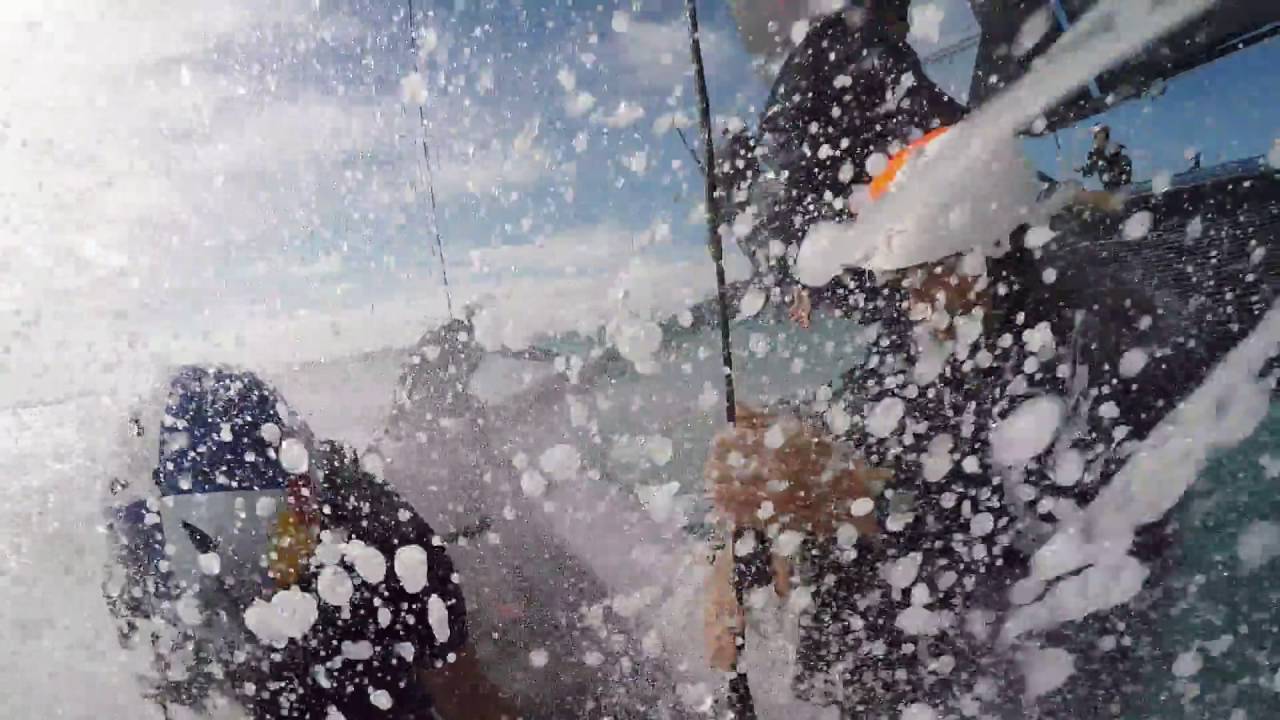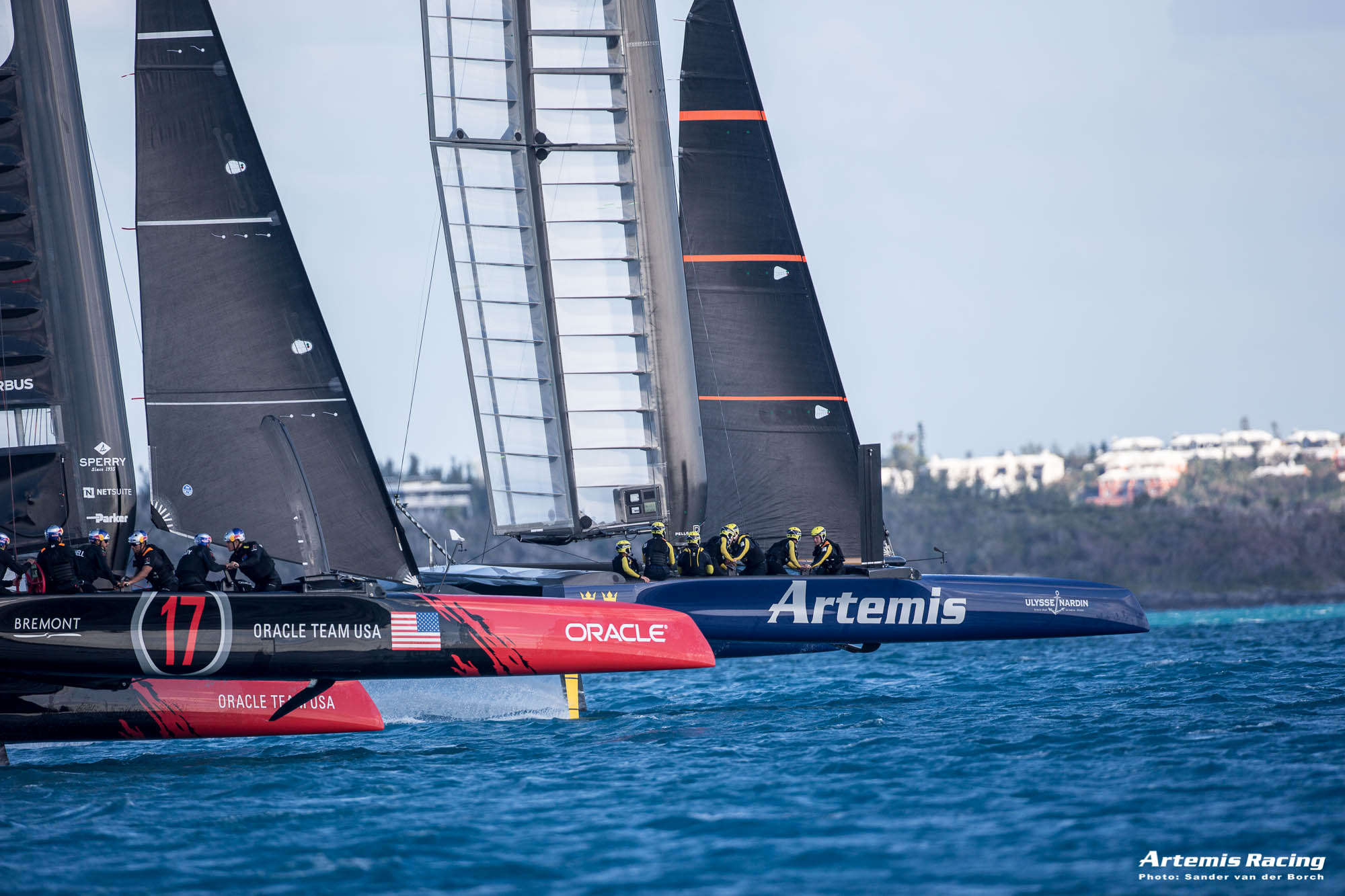Related Posts

Tre (eller fyra) ganska olika AC72
Vad säger experterna? Det cirtkulerar klipp när både ETNZ, Luna Rossa och amterikanerna seglar sina nya båtar.

#TechTuesday | Data drives athlete performance
#TechTuesday: Gathering real-time data isn’t just important for our #AmericasCup racing catamarans, but our athletes as well. Find out from ORACLE TEAM USA physical performance manager Craig McFarlane how we’re using Zephyr Performance Systems to monitor athletes on the water and in the gym. #ZephyrAnywhere #TrainLikeASailor I America’s Cup står det klart att seglarnas prestation […]

16 Comments
Leave a Reply Cancel reply
This site uses Akismet to reduce spam. Learn how your comment data is processed.
Mar 20, 2013 @ 08:57
Hehe! Det känns ju lite löjligt att det bara var några år sedan dom kryssade fram med 12orna… Har hänt lite sedan dess :-)
Mar 20, 2013 @ 09:09
På AC72 teamene sine egene videoer ser jo alt ut til å være under kontroll, men det finnes også en del amatørvideoer ute på YouTube som er verdt å se.
Denne videoen som er tatt fra et dårlig webcam i havnen viser hvor nære Oracle var å ha en major disaster i forrige uke (se fra 40 sekunder om dere har dårlig tid).
http://www.youtube.com/watch?v=SM92pkmdZ-k&feature=player_detailpage
Mar 20, 2013 @ 16:01
Cool och KSR gäller för samtliga radiostyrd som foilande flerskrov, eller?
Mar 20, 2013 @ 09:36
Någon som har det senaste från Artemis?
Mar 20, 2013 @ 11:05
De jobbar med bl.a motstånd: http://youtu.be/1hTpppRALJo
Mar 21, 2013 @ 13:45
Nu skall de bara få till en gipp i full foiling – precis som Moth ;)
Mar 21, 2013 @ 15:33
Ser för okontrollerat för att funka på en “kort” krysslänsbana. AC blir nog ett stort crash test, bara ingen dör så blir det kul att se!
Mar 21, 2013 @ 16:41
Hoppas verkligen att Artemis kan konvertera till foils, eller vad är fördelen med att köra utan?
Mar 22, 2013 @ 07:46
Mindre motstånd om det blåser lite.
Om man gör 40knop så kan du intefalla av och komma ner i vattnet blir tvär -stopp ,, sen i varje slag stannar du. i starten måste du inte bara komma iväg utan måste upp på bärplanen.
Och du bör segla längre väg…tror jag någon som vet ?”Mer fart vind “
Mar 22, 2013 @ 09:40
Att man tar sig i mål?!
Foila går ju fortare men en dragracingbil har ju inte mycket att hämta i ett F1-lopp.
Sedan har vi aspekten att det tydligen normalt blåser mer då LVC kvaltävlingarna körs än då själva AC går.
Men försvararna behöver väl enbart fokusera på AC och ändå kör på foilspåret – de vet väl vad de gör om nu någon gör det?
Eller så blir det foiling i LVC och utan i AC – skall bli kul att se hur som helst.
Mar 25, 2013 @ 22:58
Nu är de på gång. :)
http://artemis-racing.americascup.com/news/4345
UZ
Mar 26, 2013 @ 06:34
Nja, jag vet inte om man skall vara impad eller inte av att man är där Oracle var för 9 månader sedan?
Coolt i 40 knop Wow | SCTS
Mar 21, 2013 @ 18:15
[…] http://www.blur.se/2013/03/20/oracle-i-40-knop-fun-on-foils/ […]
Mar 22, 2013 @ 10:33
Redaktøren på websiden Sailing Anarchy skrev følgende rapport fra sin tur ombord på Emirates Team New Zealand sin båt for en uke siden.
http://sailinganarchy.com/page/2/
So here’s a short summary of what I learned in my day with ETNZ:
As for sailing the boat, we had 9-12 knots of sea breeze; that translated into 16-18 knots of upwind speed at 42-44 degrees of TWA (something like 13 degrees AWA) and 26-30 knots downwind at TWA of 145 or so (22 degree AWA). At these speeds, the boat is almost sedate; really forgiving, relatively easy to trim, tack, and gybe, and quite dry; in other words, there’s just no drama. Same with the crew; you hardly notice anyone, because they do their jobs quickly, quietly and with their headsets on, you hardly hear a noise beyond the constant groaning and creaking of easing sheets.
Like many of our mothies have said from the start, this Cup will be won on the foils; to that end, the one area I wasn’t allowed to shoot was the dagger board cases, though frankly there is so much going on in there that I wouldn’t even know where to begin. NZ is running two different board designs, each has a slightly different upright board profile and each sports a different angle between the horizontal and vertical arm; the more closed-off board (with a more acute angle) was the ‘easy foiling’ board; in about 22 knots the boat popped up, nearly all its weight supported by a 1.5 meter piece of carbon, the rest by the rudder elevator. On the other board, the boat struggled to foil downwind in the light air; this is maybe a less draggy, higher speed board, or the fore/aft rake position they were working on produced less lift. Note that 12 knots ain’t what this thing is designed for, but they still have to work out crossovers; there’s bound to be a case of ‘it’s not usually like this’ in San Francisco come this summer. In any event, both foils are just testers, though given the 3-month time frame to produce new ones, ETNZ’s San Francisco foils are undoubtedly being built as we speak.
Luna Rossa and ETNZ are no longer training together; LR is in her modification phase, and needs to stay out of ETNZ’s prying eyes. Bertelli’s team is trying some new toys out, including a pretty trick new main foil with some kind of innovative control system; unfortunately it blew up within a few moments of loading up on its first day, and they towed in after just a short time on the water.
And finally, yes – they are flying through the gybes on the foils. Not in 12 knots of breeze, but I got one team member to admit to me that, in their best fully-foiling gybe the other day, their speed came down to 29 knots before building back to 40. How’s that for ya?
—
Virker som om det er så stor forskjell i fart mellom foiling og non-foiling at det ikke er noe tvil om at det er raskere å foile. Banene vil også ha mer unnavind enn kryss, og starter med en kort slør før de har en lenselegg. Båtene vil derfor optimaliseres mer for lens enn kryss.
Mar 22, 2013 @ 14:47
Så det verkar de redan kunna gippa i med furl – i 30 knop!! Någon som har koll på reglerna ang detta? Var det inte så att de inte får ha två daggerboards nere samtidigt eller är det jag som fått det om bakfoten?
Mar 22, 2013 @ 14:55
De kan ha nede begge foilene i 30 sekunder før hver manøver.